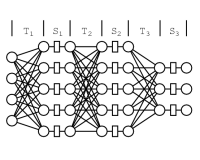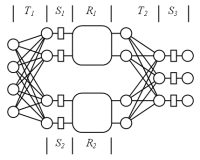libgnn, the Gradient Retropropagation Machine Library
The Beauty of GRM Design
libgnn : The Gradient Retropropagation Machine Library. A demonstration of a what can be accomplished by GRM-based design.
Download the source code and get the documentation. Also, check out grm: neural networks for your command line!
Towards Elegance
One of the mayor efforts and advances in Strong AI investigation is the development of Neural Networks.
Nowadays, Neural Networks have become one of the most flexible and powerful tools to model continuous systems.
We provide a flexible, modern and unified scheme for them: Gradient Retropropagation Machines.
So What is This About?
libgnn is a Gradient Retropropagation Machine library (GRM) written in C and distributed under the Gnu GPL. The GRM are a generalization of the gradient-based Neural Networks. Basically, a GRM is a continuous model built from basic blocks in a modular fashion which can be trained to simulate a given system from its input-output examples.
The GRM paradigm provides the model engineer with an expressivity which is far beyond that of the static and complex Neural Networks. Using GRMs, complex models can be built in a very flexible, simple, elegant and powerful way.


Motivation
libgnn was developed to provide a real, functional and efficient implementation of the GRM concept. Its unique modularity and simplicity makes it one of the most powerful tools for continuous systems modelling, a tipical engineering problem which hasn't found a fast, unified and satisfying way to be solved.
Benefits
- Minimalistic.
- Simple to use.
- Efficient.
- Extensible.
- Modular.
- Portable: (ANSI-C).
- Free.
Requirements
libgnn has been succesfully tested under Linux and Windows. The library is currently based upon GSL, which can be obtained here.
Choose a page:
Archives:
- None yet.